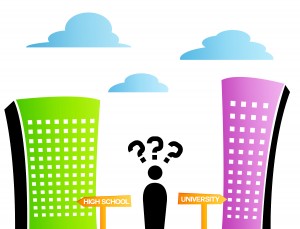Ensuring first-year success


This September, high schools in Ontario had a 34-credit cap applied to it, as well as funding reductions. This is an effort by the ministry of education put into action to encourage students to continue on to post-secondary education faster, rather than staying back for a fifth year of high school, often referred to as a victory lap.
In the 2010-11 academic year, 20,000 students in Ontario returned for at least another semester of school despite having graduated with the 30 required credits.
But this new legislation calls into question whether some students coming to university this year are attending willingly, or because they are being pressed to go by the new cap.
The faculty of arts is one example of how the university has been putting forward initiatives in the past few years to support first-year students and help with retention.
“It’s a big change from high school to university,” commented Mercedes Rowinsky, associate dean of student affairs and special projects in the faculty of arts. “And the transition period— which is the first year— needs all the support possible to offer students the best quality of education and this is what we’re trying to do here at Laurier.”
One of these initiatives is Got It!, which is a mentorship program, giving students the opportunity to connect with academic advisors to ask general advice and receive important information. First-year seminars were introduced three years ago, giving first-year arts students the opportunity to experience a smaller class. As well, Laurier Arts Scholars has been put forward, encouraging students whoare high achievers to excel.
“They’re very young. And that’s why they need more support,” Rowinsky said. “I think the elimination of grade 13 created this rush for students to come to university and who knows what you want to do in your life when you’re 18 or 17.”
In order to support this, initiatives like those mentioned above have been increasing since the victory lap was removed.
That’s why Gail Forsyth, director of learning services, believes this new legislation will not have a noticeable impact at universities.
“I wasn’t too concerned about it because there’s always been – since the introduction of the new curriculum in 2003 – a number of students, just even from peer pressure or otherwise [who] have elected to come to university,” Forsyth said. “So we’re already experienced with working with students who are 17 — some as low as 16.”
MyHelpSpace, found on MyLearningSpace, is a particularly new initiative that has been developed by learning services and the library, providing students with information that is available 24 hours day to help with a variety of aspects of student life.
Pat Rogers, associate vice-president of teaching and learning, advocated the early alert program as another initiative that has been put forward to help support first-year students who may be struggling.
“So if there’s a student … let’s say there’s behavioural issues, primarily academically, that staff or faculty are concerned about, they can send an alert through to this system,” Forsyth elaborated.
Students will then be contacted to ensure they are getting the help they need.
Chris Brunskill, transition and retention coordinator, co-chairs the Brantford retention committee. He explained that it is difficult to tell based on data whether the optional fifth-year of high school has affected first-year retention up to this point. While the new legislation was not concerning to him, he explained it didn’t go unnoticed.
“It’s an issue we’ve talked about,” he said, referring to the committee. “We’ve looked at things from age perspectives and haven’t noticed anything to be dramatic in terms of patterns … As far as the fifth year of high school, I would be inclined to believe that it’s fairly inconclusive.”
Rowinsky added that over the years she has not noticed a major difference in the capabilities of first-year students.
“People have the tendency to say that the first-years are more immature and are not ready for university,” Rowinsky said. “I always find that the students, when they’re challenged and when they’re given good directions, they respond to the challenge and I’m always blown away by the response.”


